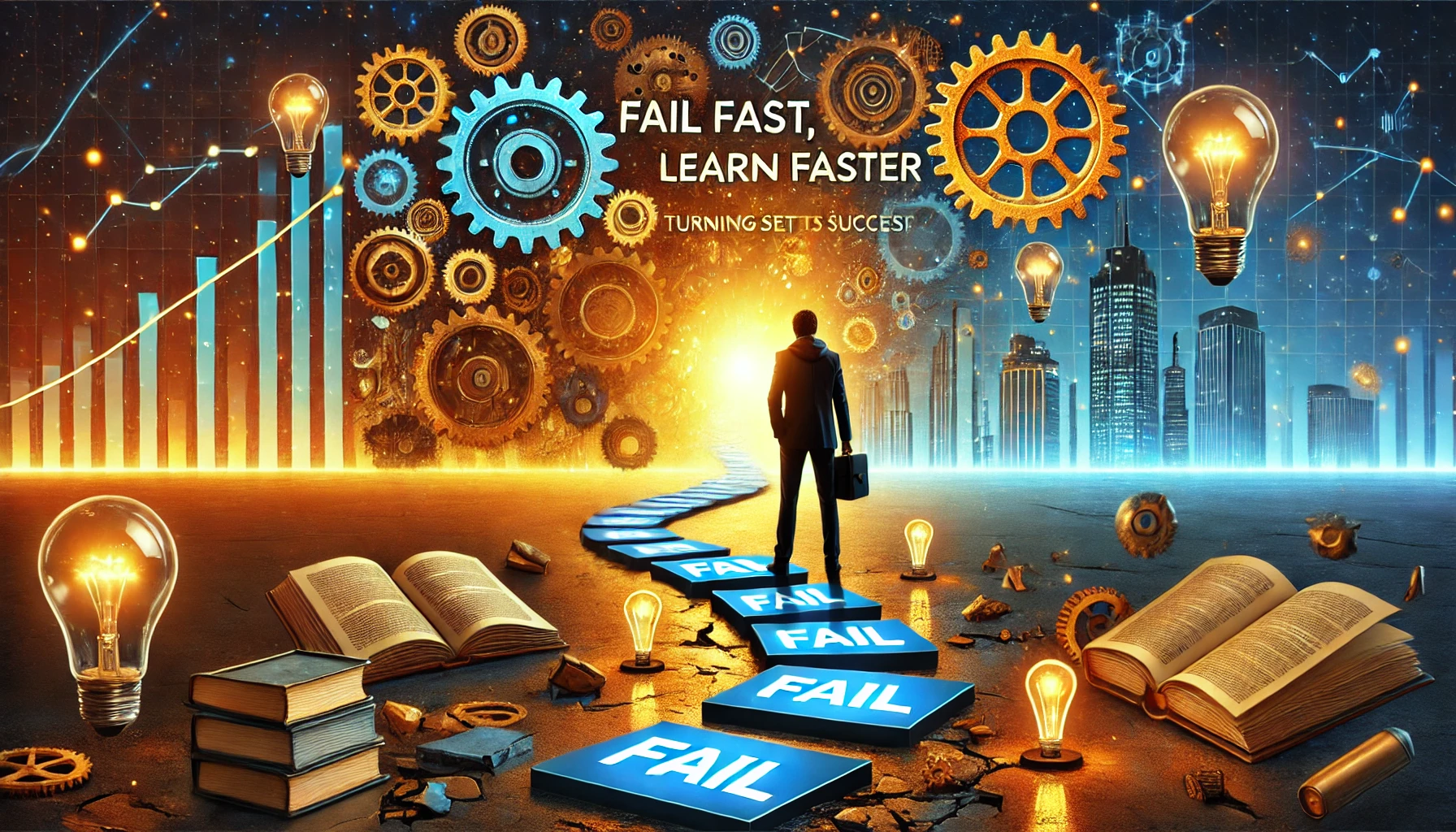Failure. The word alone scares most entrepreneurs. But what if I told you that failure is not the opposite of success? Instead, it’s a crucial part of it.
The world’s most successful entrepreneurs—Elon Musk, Jeff Bezos, Oprah Winfrey—failed repeatedly before they succeeded. The key difference? They didn’t just fail—they failed fast and learned even faster.
So, how can you turn setbacks into stepping stones for success? Let’s dive into the “Fail Fast, Learn Faster” mindset.
1. Why Failing Fast is Crucial for Growth 🚀
Many businesses fail not because they make mistakes, but because they take too long to realize them. The faster you fail, the quicker you can adapt, improve, and pivot.
✅ Failing fast = Reducing risk early
✅ Failing fast = Learning what works (and what doesn’t) quickly
✅ Failing fast = Avoiding wasting time, money, and effort
💡 Example:
Airbnb’s founders struggled for years. They failed multiple times before finding their niche in the travel industry. Instead of giving up, they adapted their model based on feedback—and now, they dominate the hospitality industry.
2. How to Fail Fast and Learn Faster 🎯
(A) Validate Ideas Before Going All In
🔹 Instead of spending months developing a product, test it first.
🔹 Use an MVP (Minimum Viable Product) to gauge market interest.
🔹 Get feedback early and tweak your approach.
🔥 Example:
Dropbox didn’t build a full product first—they created a simple explainer video. When thousands of people signed up, they knew they had a market!
(B) Embrace Experimentation
🔹 Treat every setback as a data point—what worked, what didn’t?
🔹 Use A/B testing to compare strategies.
🔹 Keep iterating based on real-world results.
🔥 Example:
Facebook continuously experiments with features, removing what doesn’t work and doubling down on what does.
(C) Reframe Failure as Feedback
🔹 Instead of saying “I failed,” say “I learned.”
🔹 Every mistake teaches you something valuable.
🔹 The faster you recognize what’s not working, the sooner you can fix it.
🔥 Example:
Thomas Edison famously said, “I have not failed. I’ve just found 10,000 ways that won’t work.” That mindset led to the invention of the light bulb.

3. Pivot When Necessary 🔄
When something isn’t working, don’t cling to it—pivot.
✅ Netflix started as a DVD rental company before pivoting to streaming.
✅ Slack was originally a gaming company before shifting to workplace communication.
✅ Instagram was once a check-in app before becoming a photo-sharing platform.
The best entrepreneurs don’t quit—they adapt.
4. Build a Culture of Learning, Not Fear 💡
If you want to scale, you must remove the fear of failure from your team and organization.
✅ Encourage innovation—even if it means mistakes.
✅ Foster a feedback loop where employees analyze failures openly.
✅ Reward smart risks—not just results.
🔥 Example:
Google’s “20% Rule” allows employees to spend 20% of their time on side projects. This led to innovations like Gmail and Google Maps.